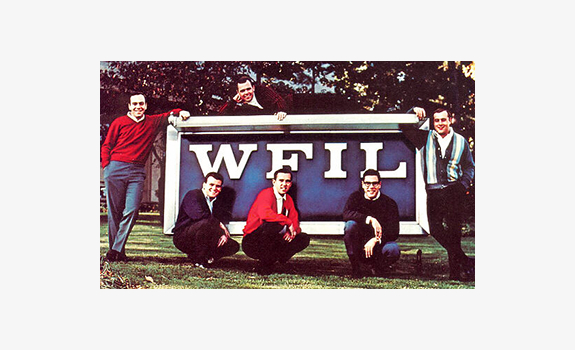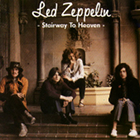Using limited playlists makes you spin less worse (hence, more good) songs for your P1 audience, music director and radio consultant Keith Hill says about music libraries.
For another installment of our music scheduling expert series, I spoke with radio veteran Keith Hill about playing smaller libraries (containing enough stars) for higher ratings, and perfect flow versus perfect history to keep your core listeners happy. “They put up with a linear mistake because they love you, but they get tired of Alan Jackson, Alan Jackson, Alan Jackson”.
“Every format has Mount Rushmores”

Iconic artists (and their popular songs) within the format should be played frequent and regularly (photo: Wikipedia)
Eliminate your personal preferences
Software allows us to schedule many hours very fast and to control rules and histories. Do you see any disadvantages compared to the old days with index cards and rotating carts or records?
“No, I don’t think so. Manual scheduling introduces a lot of human bias. I’ve seen too many music directors playing the songs that they like. I’m scheduling music for about 40 stations in the US every week. When I schedule, I don’t have the artist and title revealed in the configuration.” Instead, he sees a dashboard that displays artist separation, core (“star or no star”), tempo, gender and sound. “I don’t want the artist and title to bias me.” He adds that it’s still good to check the music log after it’s been fully scheduled. The music director of client station 98.9 WOKO (Country) in Burlington, Vermont, called him one day:
[audio:http://www.radioiloveit.com/wp-content/uploads/keith-hill-music-scheduling-radio-consultant-interview-01.mp3|titles=Keith Hill about manual playlist checking]
 See the big picture
See the big picture
But 2 slow female songs back to back could fit within a certain context, for reasons that a computer just cannot feel.
“Yes, and no listener is ever gonna’ go: ‘oh, my God, they just played Miranda Lambert and Carrie Underwood back to back.’ If this happens a few times a day, and you make sure everything else does makes sense – like history and artist spread – perfect. Listeners don’t know we have these rules.”
Position core artists regularly
Hill is using sound codes not only for music genres, but also for scheduling defects. “Many Country songs are about God and Jesus, so we have a Religious code. Then there’s the collateralized ‘beer, whiskey and bars’, which get the Alcohol code. We also have pick-up truck problems; pick-up truck, pick-up truck, pick-up truck! After 9/11, there were many songs around it, so we had a Patriotic code.” He likes to include a code to identify core artists. “Every format has Mount Rushmores: iconic artists. Code them ‘star’ and the others ‘non-star’, and position stars telephone-pole intervallic throughout the hour. The weakest part of any music log is: non-star, non-star, non-star, non-star, non-star. If you have at least 20% stars in your library, play 1 star per 5 songs. If it’s 25%, you can do 1 out of 4.”
“Prepare a tossed salad”

Music variety and program flow are important to keep P1 listeners coming back to the station (photo: Epermarket)
Serve a variety mix
The more rules you have, the more they mess up your mathematic song rotations, right?
“Yeah, they do, and that’s a big tension. In the old days, I was a big fan of an absolute set of unbreakable rules. You need some of those, but it’s fine to have a robust set of breakable rules. Decide what matters to you most: perfect linear schedules or great library spread? When I programmed a CHR station in Virginia Beach, many years ago, my consultant Alan Burns used to say: Keith, you’re scheduling a record for 12:30 and then one for 12:33. What’s the chance that somebody who listens at 12:30, listens at 12:33? There’s a 97% chance they’ll hear both records. What’s the chance that somebody who listens at 12:30 today, also listened at 12:30 yesterday? 60-70%. So if you can create a perfect linear flow, forget about yesterday.”
 Keep frequent listeners happy
Keep frequent listeners happy
He mentions Country consultant Bob Moody of the Real Local Radio Group, who is a fan of focusing on Preference 1 listeners (to which your radio station is their first choice). Hill quotes him, saying that “you want to give your P1s an impression of variety, so you need to have a great history. They put up with a linear mistake because they love you, but they get tired of ‘Alan Jackson, Alan Jackson, Alan Jackson’. Even if it’s a different title; it is the same artist.”
Monitor song rotation patterns
“I believe there’s near-Nirvana”, Hill continues. “If I have to break a rule, I’ll break a linear rule, because I do believe it’s about the folks who love your station. It’s the cluster of sameness that irritates listeners and causes tune-out. If your music is a salad, you want to prepare a tossed salad; not onion, onion, onion and tomato, tomato, tomato. So include variety in your library composition and music flow, but never have a bad song history.” Imagine a restaurant where you only can get the first meal out to one customer. Do you first serve the guy you see once a month, or the person you see three times a week?”
“You could go to many US markets and
do some worst to first”

Several (major) US radio markets lack a station with real on-air excitement and listener engagement (image: Z100)
Ensure perfect song spreads
Serving P1 listeners first makes a lot of sense – especially in PPM markets, from what I’ve heard.
“Yes, but I wouldn’t respond as quickly to PPM as some programmers do. Someone from Nielsen said it’s like taking a zip of water from a fire hose. There’s so much data coming at ‘ya. Many people tune out for reasons other than disliking a song, like when they’re getting a call. If I were a PD in New York City today, I would have 2.500 Portable People Meters out there. Boy, talking about P1. I don’t have to keep 14 million people happy; I need to keep 2.500 people happy. I’m going to assume that they’re listening to my station constantly, which means that I’m going to give them great histories.” He therefore has a slightly different opinion than his colleague Robert Johansson, who advises to Put Music Flow First, Song Rotation Second.
 Combine music and excitement
Combine music and excitement
In a competitive market like The Big Apple, could we still take a station ‘from worst to first’ today, using an aggressive music strategy?
“You can go from worst to first in any market, if you have a really compelling station. Musically, you could be tight & right. It’s mainly about what happens in between the songs; the fun and excitement, personalities and promotions, image and stationality.”
Offer live & local programming
“When Scott Shannon did it with Z100 in 1983, there wasn’t a station that had a superglue hold on Top 40 listeners. He brought in a more fun station – with a tight playlist, Morning Zoo, street level, big promotions, ultra New York! Rather be super local and have personalities that are meaningful to the marketplace. Today, you could go to many US markets and do some worst to first, as we’re now doing a worse job at broadcasting.” Hill believes there’s plenty of opportunity to pull stunts like Shannon did, because it looks like companies rely more on voice-tracked remote syndication than live & local engagement:
[audio:http://www.radioiloveit.com/wp-content/uploads/keith-hill-music-scheduling-radio-consultant-interview-02.mp3|titles=Keith Hill about feeding the transmitter]
“Whenever you say the call letters,
you say these ones”

The Boss Jocks of ‘Famous 56’ WFIL made the station sound bigger than life (photo: Philadelphia Radio Archives)
Play top songs only
How many songs should a station play for a certain format?
“When I was a program director for Greater Media, my boss was Julian Breen. He was a brilliant man and Rick Sklar’s APD at WABC-AM in New York. During conference, Julian said: gentlemen, every radio station has a number; the number of songs on the playlist. In CHR, it could be 200, in AC it might be 500. Every radio station has a blood pressure, just like a human being. If one of you guys tells me you have 850 songs in your library, then you have high blood pressure, and need to go on a diet and cut back! Julian was absolutely right.” Hill recalls what Hot Hits inventor and Top 40 radio consultant Mike Joseph said about rotations and how to win the music scheduling battle with other stations by playing fewer songs:
[audio:http://www.radioiloveit.com/wp-content/uploads/keith-hill-music-scheduling-radio-consultant-interview-03.mp3|titles=Keith Hill about winning ratings wars]
“If you have 850 songs in your library,
then you have high blood pressure”
 Include major format benchmarks
Include major format benchmarks
He notes that you should still play enough songs to cover the essence of your format. “You cannot have a Classic Rock station and not play Stairway To Heaven, Tom Petty and Steve Miller. But to steal a phrase: less is more. Or to use another one from the 1960s: tighter, righter; more clatter, less chatter. I love personality on my stations. As long as a 1-hour aircheck can be played in 3 minutes.”
Sell your station brand
I guess you’re a fan of music-driven formats like Bill Drake’s Boss Radio?
“Yeah. One of the stops on my resume, probably my favorite, was WFIL in Philadelphia. It was a legendary Top 40 station. We used crash and roll intros, like Boss Jocks, doing breaks of 7-14 seconds. Outside the studio was a billboard with the station’s call letters, 4 feet tall and made out of polished metal. They shined. The program director took us outside during a jock meeting and said: ‘gentlemen, whenever you say the call letters, you say these ones. Notice, there’s a space between them. So lift and separate when you say the call letters: W… F… I… LLL.’ When you listen to the airchecks from those days, you’ll never hear a single jock say those call letters without punch in ‘em. We said them with great pride.” [ See also: part 2 ]





Add Your Comment